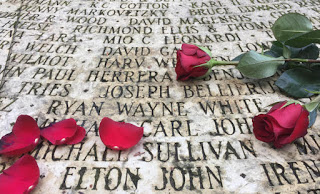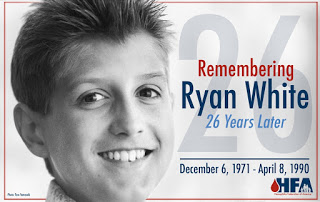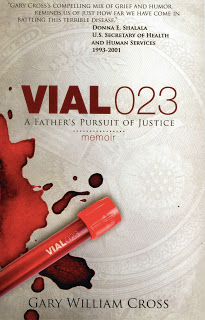Dying in Vein on Easter
 |
| Must read |
Today is Easter, a time of transition; in faith, celebrating the death and resurrection of Jesus, in weather, a celebration of spring in the Northeast. It’s a time to watch the dying of winter and the coming of new life. It’s also the end of Hemophilia Awareness Month, and I want to close this special month by reading and sharing the book Dying in Vein: Blood, Deception … Justice, by Kathy Steward MacKay.
The thoughts of those who died in our Hemophilia Holocaust are never far from me; I keep photos of my friends who passed in framed photos on my bookcase at home. They’ve been there for 18 years in some cases: Michael Davon, Tom Fahey (both from the Boston area), and Dave Madeiros. I suppose this is why I was so drawn to Kathy’s book. It’s a photojournal of stories of those with hemophilia who contacted HIV. You can read it in an hour, but the photos and stories will stay with you forever.
 |
| My library of hemophilia Holocaust books |
I think this is why I keep framed photos of my departed friends; they are always there to look at, when I walk by them. But sometimes, like anything you see every day, they fade into the background, and become part of the surroundings. You don’t notice them much; you take them for granted. I do it to my photos; we all do it to the HIV community. Yes, many of those in Kathy’s book have passed on, but many are still here, struggling. We tend to forget about them, as the community is enjoying a new era in health and quality of life, but Barry Haarde’s shocking passing in February is a stark reminder that they still suffer, still carry wounds and stigma, still need us to remember them.
 |
| Remembering: Tom, Mike, Dave |
Dying in Vein is beautifully written, and exquisitely photographed. Kathy is a professional photographer, and captures searing emotions and tender scenes in her book. Black and white photos are extremely powerful when done right, and render the families, the emotions, the turbulent times like a classic movie before there was color, like a work of art, and even with a nod to the purpose, which itself seems black and white: Something bad happened to good people. The book whispers “Never forget,” which is the phrase that greets you when you enter the Dachau concentration camp in Germany. Never forget.
 |
| Too young to die |
I loved the portrayal of Tom Fahey, co-founder of the Committee of Ten Thousand (COTT). I knew Tom personally and attended his funeral. I was able to speak with him on numerous occasions to learn more about what it was like to have hemophilia and HIV, to understand his mission to bring justice to those who contracted HIV through their actor. Tom was not militant; he was a gentle giant, as the photos accurately captured. He sympathized with me, a young mom at the time, trying to understand the devastating disease that my own son narrowly escaped. I sympathized with him in his mission.
The story of Robbie Johnson was heartbreaking; such a lovely young man, who adored music and his mother. He shot himself in the head at age 22, when he learned that despite all the pain he had suffered, things would get worse. He reached his end. I wonder how many of our guys today are suffering this same agony. Robbie’s photo is on the cover of the book.
 |
| Bryan Clark |
And Bryan Clark… the updated book did not update that Bryan has passed in 2009. I only know this due to an exquisite story about Bryan. I was bound that year for the Dominican Hemophilia Camp that I helped to found. But the camp almost never happened; you cannot have a camp with 50 boys with hemophilia and no factor. We almost cancelled camp. Where would we get all the factor we needed? Then a phone call. Bryan’s mother, who asked if she could donate her son’s factor to Project SHARE; he had died. The Clarks had never been on my mailing list; I guess they found me through their HTC. I never heard of them They donated the factor, and I took it with me to the Dominican Republic camp that year. I shared with the boys how special this factor was, as it was given by a family whose son with hemophilia had died. How this donation permitted all the boys to enjoy camp. And these are boys who are very poor; camp means everything to them! Later at camp, all the boys made cards for the family to express their thanks. The theme of the camp was metamorphosis, represented by a mariposa, butterfly… to show the boys how camp will help transform them. The boys all drew butterflies on their cards. Weeks after I returned from camp, I heard from Bryan’s mother, who was shocked. Bryan loved butterflies… how did I know, she wanted to know?
 |
| Tom and Fran Fahey |
We are all interconnected in the hemophilia family, in good times and bad. In sickness and health. Our past, their past, is as much a part of us as our future together. While we our community continues to go through a metamorphosis, like Easter, like spring, Kathy’s book Dying in Vein takes a snapshot of a time in history that we must never, ever forget, and we must honor. Perhaps March, or Easter, or spring, is that time to do that.
Order Dying in Vein here.




